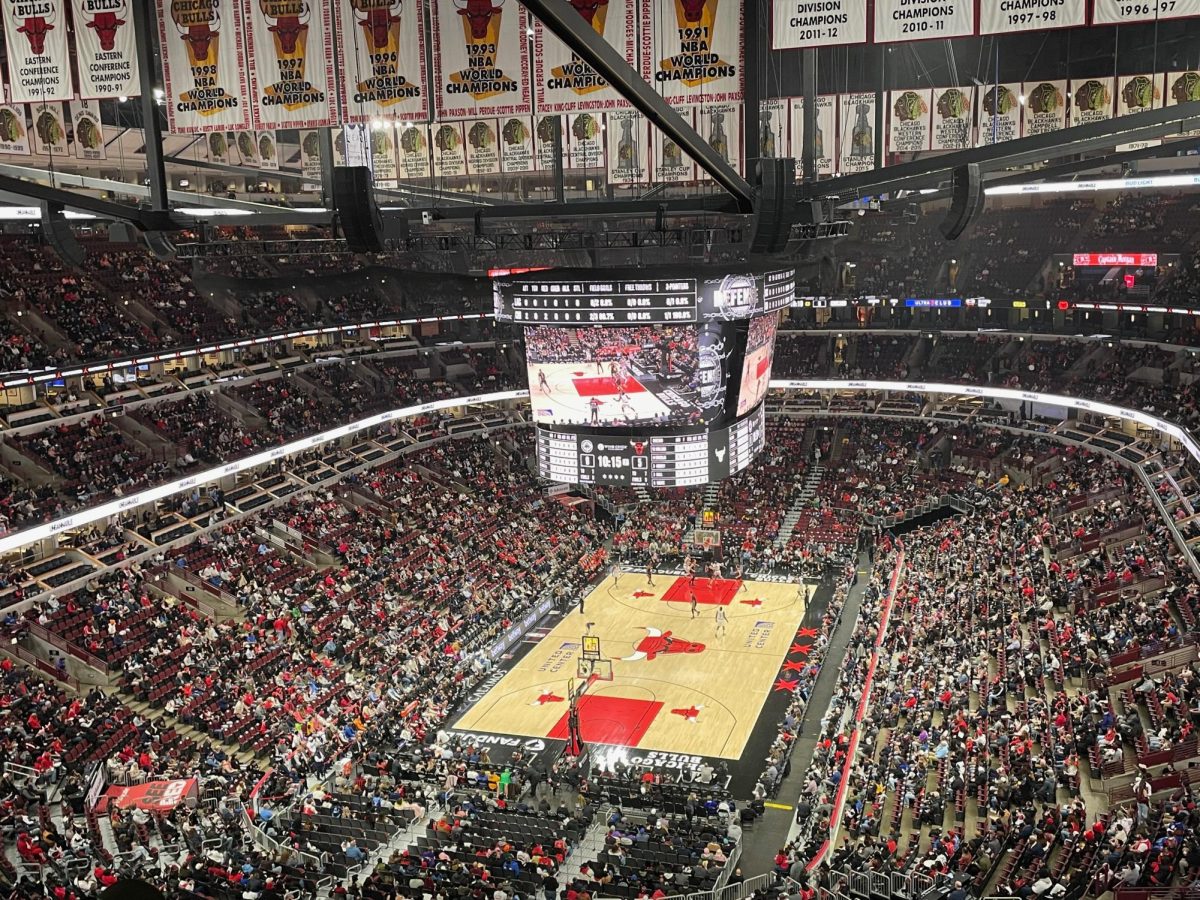It is a common sight to spot student-athletes strolling through the quad sporting gray sweatpants or an athletic hoodie, but less common are non-athletes understanding why they rock these clothes so often.
Every varsity athlete on UChicago’s campus received a pair of “grays,” which includes a gray hoodie with their respective sport’s name lettered onto it and a pair of wide-legged gray sweatpants with a white “C” on them. These sweatsuits blatantly distinguish these students as athletes. This year, all student-athletes were also issued a pair of black-and-white Adidas Supernova shoes.
To get a sense of how often athletes wear these sweatsuits, The Maroon conducted a survey of 10 members of the Women’s Athletic Association (WAA), a group made up of female varsity athletes on campus who work to promote women’s athletics and facilitate close relations among players. The Maroon found that 75% of WAA members surveyed wear their grays one to two times per week, 12.5% wear their grays two to three times per week, and 12.5% wear their grays less than once a week. Most of the athletes asked on UChicago’s men’s athletic teams also said they tend to wear their grays multiple times per week.
Many athletes enjoy wearing these gray sweatsuits because of their comfiness. Kati Heller, a fourth-year forward on the women’s basketball team, stated that she wears her grays so often because “they are literally the most comfortable clothes I own.” Tory Piuze, a first-year catcher on the softball team, agreed. “They're definitely my most comfortable sweatpants,” she said.
The efficient nature of these clothes is also cited as a reason why student-athletes like them. Grace Hynes, a third-year on the women’s basketball team, said she likes “wearing grays because they are easy… I wouldn't say they’re the nicest look, but they are the most convenient.”
When asked to choose the part of the outfit they like the most, athletes seemed to favor the gray sweats. “I prefer to wear the sweats more often than the hoodie just because I think the sweatpants are more comfortable,” Piuze said. Ashley Gao, a third-year forward on the women’s basketball team, agreed, stating that she preferred the sweats to the hoodie because they are easier to match with other outfits. “The sweatshirt’s font and graphic makes it a bit less versatile, and I’d say I have more hoodie sweatshirts that I can rotate through compared to sweats.” Josie Majowka, a first-year forward on the women’s soccer team, had a different reason for disliking the hoodie; she claimed hers shrunk too much in the dryer. “Mine is pretty tight,” she lamented.
The black Adidas trainers that go with the athletes’ grays did not seem to be a favorite among WAA athletes. Majowka stated that the Adidas shoes were very uncomfortable. Alfaro had a similar opinion, stating that she is “not a fan” of the shoes and only wears them on team trips when she is required to. Gao had a more positive outlook on the sets of sneakers, saying that “it was cool that all of us could match,” and calling the shoes “a nice addition to our gear haul.” She did admit, however, that the black Adidas shoes “are not personally [her] style.”
Athletes, then, are usually found rocking their grays with different types of shoes. Majowka usually wears hers with her own sneakers while she works out in the mornings. Hynes stated that the “shoes that look the best [with the sweatpants] are probably some white gym shoes,” but that she has also “seen them in combination with some UGGs, and that doesn’t look too bad either.” Gao prefers to wear “any sort of basic white or light-colored sneaker” with her grays—Jordan Air Force 1s are her shoes of choice.
To many student-athletes, wearing their grays to class is part of their on-campus identities. Piuze equates wearing grays “to wearing your favorite band's t-shirt or your professional sports team's jersey. When wearing those items, you're projecting that you're a…member of that community.” Arrish Bhandal, first-year forward on the men’s basketball team, felt similarly. He said that he feels “a sense of comfort” when spotting another UChicago athlete in their grays. “Just being a student at this university is far from easy,” he said. “Being a student-athlete here is just a whole other breed… it's comforting, during difficult times, to know that there are others who share that experience.”
Hynes added that “seeing other athletes in their grays is also beneficial in classes where you don't know anyone. If I see someone wearing their grays, it is an easy way for me to start a conversation and get to know them.” Hynes’ remarks are backed up by the WAA survey. 87.5% of WAA athletes surveyed said they are more likely to try to talk to or become friends with someone else in their classes if they see them wearing their grays.
Some athletes feel differently, stating that they often feel judgment from their Non-Athletic Regular Person (NARP) peers about being student-athletes. One athlete who filled out the survey but chose to remain anonymous said that she felt that “the general, automatic assumption is that athletes are less academically fit for the school or were admitted completely through athletics.” Another athlete, who also wanted to remain anonymous, expressed similar qualms. “Especially in classes where I’m the only athlete, I found myself thinking that I shouldn't wear my hoodie or sweatpants more than once a week… [I don’t] want people to see me just as a student-athlete who got into this school because I can play a sport well.”
A student-athlete identity is near and dear to the hearts of many at UChicago. First-year Takeo Prather, an outfielder for the baseball team, said that he “can't imagine what not playing a sport competitively would be like.”
Athletes constantly wearing their grays around campus may seem silly to some, but to these athletes, the sweatsuits can represent the triumphs and tribulations that come with being a student-athlete at a school like UChicago. These athletes live incredibly hectic schedules which differ from the average UChicago student’s, especially on the weekend. UChicago teams, as a member of the University Athletic Association conference, for example, fly around the US and are out of town every other Thursday to Sunday during their seasons. To many athletes, the clothes they wear represent the incredible shared experience by this close-knit athletic community that helps bind them together.








